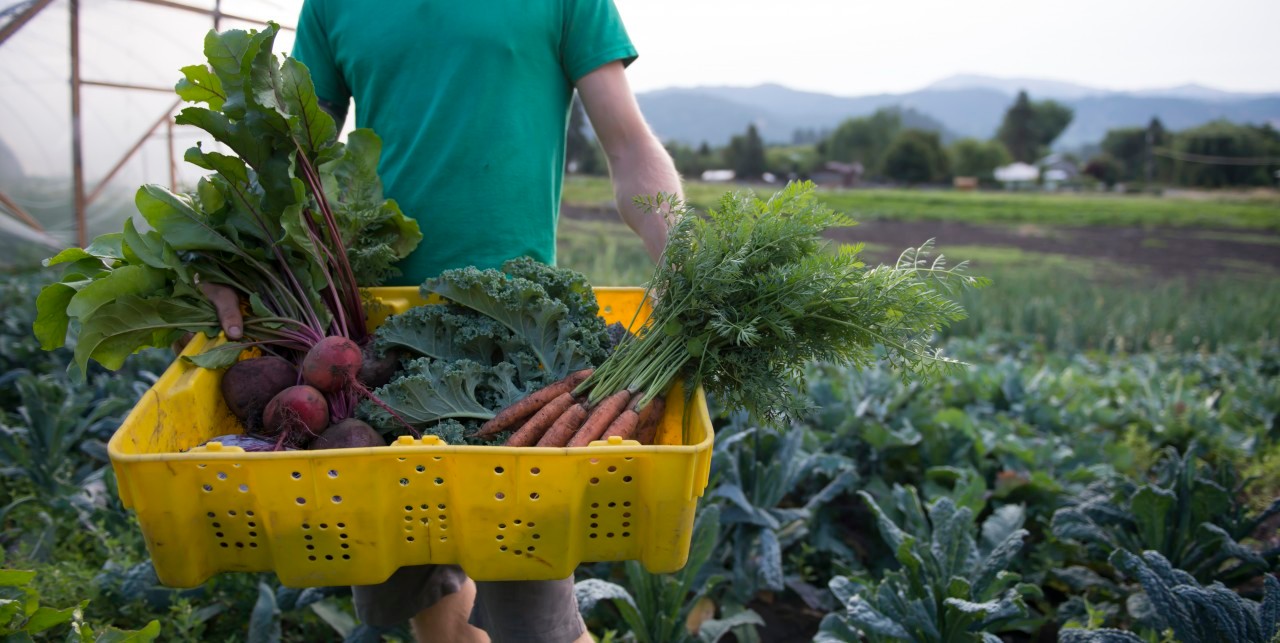The Dirty Dozen Foods

You may be eating foods with pesticides. Find out with the Dirty Dozen Foods list of pesticide-laden produce, and learn how to reduce food pesticide exposure.
If you and your family try to eat the healthiest foods possible, you likely know the importance of a diet rich in vegetables and fruits. However, it’s no secret that farmers use a wide array of pesticides and herbicides on the food they grow, including so-called “health” foods like berries and kale. Unfortunately, you may be ingesting the chemical residue when you eat non-organic produce.
To make consumers aware of foods most heavily laden with pesticides, the non-profit, non-partisan Environmental Working Group (EWG) publishes an annual list of produce found to carry high levels of pesticides.
Known as the Dirty Dozen Foods, the list can help steer you away from foods with pesticides and let you know which produce needs careful and thorough washing to reduce the pesticide burden.
YOU MIGHT ALSO LIKE: Are Artificial Sweeteners Good for You?
Foods with pesticides may impact health
The Environmental Protection Agency (EPA) is primarily responsible for regulating and making sure pesticides in the U.S. aren’t dangerous to human health. But even when chemicals are deemed safe by the EPA, some researchers express concern, based on research that may be more recent than studies used by the EPA. There are also many unknowns about how ingesting combinations of pesticides may affect humans.
What’s more, the EPA has sometimes moved slowly identifying risks when it comes to foods with pesticides. For example, the EPA did phase out all uses of the pesticide aldicarb in 2010, due to safety issues. However, the pesticide had been used for decades. It took 25 years, after thousands of people were known to be sickened by eating food containing the pesticide, before a ban on the chemical was put in place
Several studies in recent years have suggested diets that include foods with pesticides raise the risk of cancer. A case in point: A study of about 70,000 adults, published in JAMA Internal Medicine, concluded those who ate organic foods most of the time had a 25 percent reduced risk of colorectal, breast, skin, and prostate cancers, compared to those who didn’t eat organic food.
Children may be especially vulnerable to any potential health risks from pesticides in food. In fact, citing a potential link between pesticide ingestion and problems in brain development during pregnancy and early childhood, the American Academy of Pediatrics (AAP) urges limiting pesticides in youngsters’ and expectant mothers’ diets when possible.
Bottom line? Check out the Dirty Dozen Foods
To come up with their ranking of foods with pesticides, the EWG analyzed tests from the U.S. Department of Agriculture (USDA) documenting both the kind and number of pesticides found on each individual type of vegetables and fruits. In all, tests were conducted on 41,000 samples of food, after the produce had been washed and, if appropriate, peeled.
For the fourth straight year, strawberries were found to be the “dirtiest” on the Dirty Dozen Foods list, with an average of eight different pesticides in each sample. Some samples contained as many as 23 kinds of pesticides.
Kale, a popular vegetable hailed as a “health” food, was a top contender on the Dirty Dozen Foods list, taking third place. More than 92 percent of conventionally grown kale samples had at least two pesticide residues, and some were loaded with up to 18 different pesticides.
“We were surprised kale had so many pesticides on it, but the test results were unequivocal,” said EWG toxicologist Alexis Temkin, PhD. “Fruits and vegetables are an important part of everyone’s diet, and when it comes to some conventionally grown produce items, such as kale, choosing organic may be a better option.”
The 2019 Dirty Dozen Foods List: Foods with pesticides in the high range
- Strawberries
- Spinach
- Kale
- Nectarines
- Apples
- Grapes
- Peaches
- Cherries
- Pears
- Tomatoes
- Celery
- Potatoes
Don’t give up healthy foods over fear
More research needs to be done to understand and thoroughly document specific health risks resulting from foods with pesticides. However, it makes sense to take practical action where you can.
For instance, organic food is expensive but a good choice, if it fits into your budget. However, if you can’t afford all organic meals, don’t give up the health benefits of eating a diet loaded with fruit and vegetables. There are ways to lower the amount of pesticides in non-organic food.
The AAP recommends washing produce extra carefully under cool or lukewarm tap water and scrubbing it with a brush. You should also peel fruits and vegetables when possible to remove pesticide residue. Remove and throw away the outer layer of lettuce, cabbage and other leafy vegetables where most pesticide is found.
Although the Dirty Dozen Foods list deals with produce, the AAP notes pesticides can find their way into meat and poultry, too, and are mostly deposited in fatty tissues. Trimming all visible fat from meat and removing fat and skin from poultry after cooking can lower the pesticide burden in those foods, the AAP explains.
Updated:
April 09, 2020
Reviewed By:
Janet O’Dell, RN